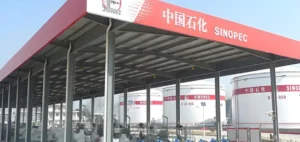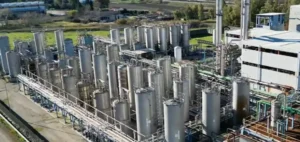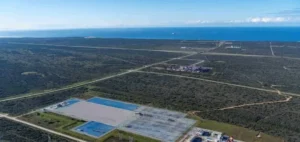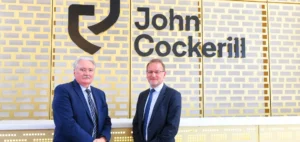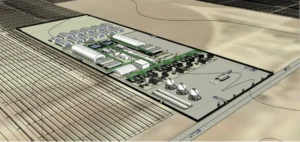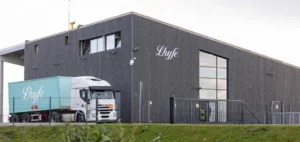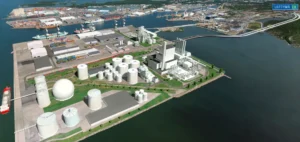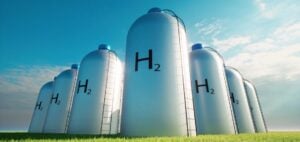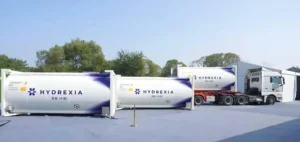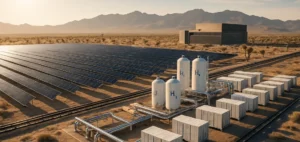Japanese energy giant ENEOS Holdings intends to step up a gear in the development of hydrogen supply chains, with the first investment decisions expected in a few years’ time, as it sees hydrogen as one of the key solutions for halving its carbon intensity by around 2040.
ENEOS’ carbon neutrality roadmap
“Of course, this can be done from [de l’introduction] low-carbon gasoline by modifying the current fuel, but it would also mean increasing the share of renewable energy, hydrogen and carbon-free hydrogen.”
“The whole discussion about carbon intensity is not about the carbon neutrality of individual companies, but about what to do with our energy supply as a whole,” Sunaga said in an interview at the company’s Tokyo headquarters.
“In that sense, it’s about hydrogen and others to have greater weight as a premise.”
ENEOS Holdings, the parent company of Japan’s largest refiner, aims to halve the carbon intensity of its Scope 1, 2 and 3 greenhouse gas emissions from 87 g/CO2/MJ in 2025 to 44 g-CO2/MJ by fiscal 2040-41 (April-March).26 as part of its carbon neutrality roadmap established in May.
“While we’re aiming for carbon neutrality for Scopes 1 and 2 by 2040, we would only be able to reduce our carbon intensity to around 75 [g-CO2/MJ] from around 90, even when we achieve carbon neutrality for Scopes 1 and 2,” said Sunaga.
“In other words, most [de nos émissions] fall within scope 3.”
Hydrogen, a key pillar of ENEOS Holdings’ carbon neutrality plans
As part of its carbon neutrality efforts, ENEOS Holdings has drawn up action plans to reduce the carbon intensity of its energy segment in phases, based on measures such as increasing its supply of CO2-free hydrogen, sustainable aviation fuel (SAF) and renewable energy, as well as carbon capture and storage (CCS).
ENEOS’ decision comes as Japan has set itself a target of 12 million tonnes/year of hydrogen by 2040 as part of the amendments to the National Hydrogen Strategy approved on June 6, under which the country is also setting new carbon intensity targets. Japan will aim to achieve less than 3.4 kg-eq. CO2/kg-H2 of well-to-production carbon intensity for hydrogen and will target less than 0.84 kg-eq. CO2/kg-NH3 door-to-door carbon intensity for ammonia by 2030.
Hydrogen ambition “Speaking of hydrogen, with the government setting a target of 12 million mt/year of use by 2040, we hope to supply 4 million mt/year [d’hydrogène], just under half the scale of hydrogen demand,” Sunaga said.
The company is working to develop CO2-free hydrogen supply chains in Australian Queensland and the states of South Australia, in Sarawak in Malaysia, and in Saudi Arabia and the United Arab Emirates.
“We have partners looking at producing hydrogen from renewables in Australia, as well as considering blue hydrogen projects in oil-producing countries,” said Sunaga.
ENEOS: carbon neutrality by 2040 despite reduced demand for petroleum products
ENEOS Holdings now expects to make investment decisions in fiscal 2025-2026 to start 250000 mt/year of hydrogen supply from multiple projects, he said. The company, which currently meets around half of domestic demand for petroleum products with a combined refining capacity of 1.74 million barrels/day in Japan, plans to start up its first 300,000 tons/year Development Action Fund production unit from around the second half of 2026, Sunaga said.
“The first unit to use HEFA [esters hydroprocédés et acides gras] products from used cooking oil,” he said, adding that the company was in the process of securing HEFA raw materials. While exploring options for subsequent SAF production units, Sunaga said the company is “considering investing in companies that handle alcohol to jet technology.”
In any case, ENEOS Holdings expects to need to import SAF during the initial phase of introduction, after establishing its import capacity at its facilities, said Sunaga. Reduced GHG emissions ENEOS Holdings, which aims to be carbon neutral for its Scope 1 and 2 GHG emissions by fiscal 2040-2041, expects emissions from refining operations to fall as demand for Canadian petroleum products is expected to be halved by then, Sunaga said.
“Given the current downward trend in demand for fossil fuels, our emissions will fall in tandem with the reduction in our supply of fossil fuels,” said Sunaga.
“However, we still expect a certain amount of fossil fuels to be used in 2040, around half the current level. So we need to think about ways to offset this.”
ENEOS aims to significantly reduce GHG emissions through CO2 storage
ENEOS expects its Scope 1 and 2 GHG emissions to decrease to less than 31 million tonnes per year by fiscal 2025-2026 and to less than 19 million tonnes per year by fiscal 2030-2021, compared to its baseline of 36 million tonnes per year in fiscal 2013-2014.
With its upstream branch, ENEOS Holdings expects CCS to be a key solution for offsetting remaining emissions, in addition to creating carbon credits from long-term forest absorption, said Sunaga. ENEOS Holdings’ energy and upstream activities are part of one of the seven CCS projects selected by the Japanese government in June to store 13 million tonnes/year of CO2 in Japan and abroad by 2030.
The CCS project covering the northern and western Kyushu offshore areas aims to store 3 million tonnes of CO2 from refineries and thermal power plants in western Japan. ENEOS aims to store between 4 and 10 million tonnes of CO2 per year for CCS for other companies by the fiscal year 2040-2041, when it expects to have a 50% share of national FAS supply and 6-8 GW of renewable energy generation capacity.



